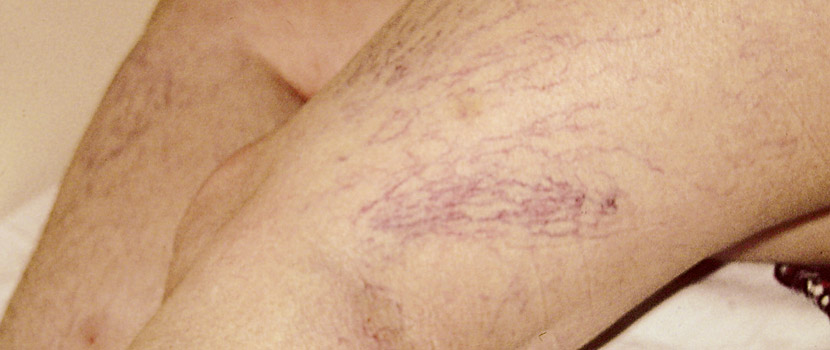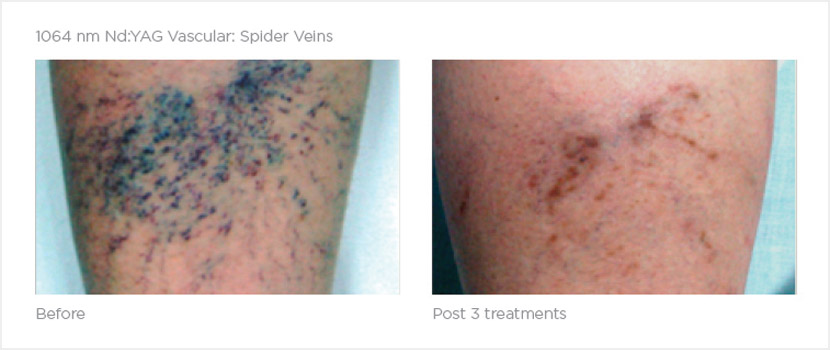What are Spider Veins?
Spider Veins are very small veins on the surface of the skin and the term is used because the fine interconnecting little veins can resemble a spider web pattern.
What are the different types?
The smallest spider veins are red in colour and medically we term these tiny blood vessels telangiectasia. Slightly larger veins are blue to purple in colour and medically we term these venulectasia. Spider veins can be isolated or can form a cluster in which case it is known as a venular flare.
A Venular flare can be fairly localised and resemble a bruise which can be red to purple in colour depending on the size of the blood vessels. On the outer thighs and calves it is quite common to have a ‘flare’ of veins occurring with a small varicose vein feeding into a circular group of veins.
What causes Spider Veins?
Studies on spider veins to try and detect hormone receptors in the vein wall have not been able to establish a direct cause and effect relationship. However anecdotal evidence suggests hormonal factors are important in the development of this condition, as women often associate the appearance and/or aggravation of spider veins with being on the oral contraceptive pill.
Who is at greatest risk?
The incidence is much greater in women than men. When men present with unwanted leg veins, they are much more likely to be varicose veins. This is partly because men are less likely to be troubled by the appearance because hairy legs can obscure unsightly veins, but also because the incidence of spider veins in men seems much lower than in women, presumably because of hormonal factors.
What are the major symptoms?
Whilst the main concern for patients is the appearance of the veins they can also cause symptoms such as aching and heaviness. Women often complain of more discomfort during the premenstrual period.
What are the possible complications of Spider Veins?
Unlike varicose veins there is less evidence that Spider Veins will result in any long term complications unless they are present in combination with underlying varicose veins,
One concern for elderly patients with spider veins especially around the ankles, is that raised veins under pressure from deeper veins can bleed when they are knocked and this bleeding can be difficult to stop.
What are the treatment options for Spider Veins?
There are three primary treatment options: Surface sclerotherapy, surface laser, and surface radiofrequency. For the vast majority of patients surface sclerotherapy is the treatment of choice. It is the most effective option and can treat a wide range of different sized Spider Veins. Laser and radiofrequency are reserved for the smallest of spider veins.
For patients who are ‘needle phobic’ or are allergic to sclerosant solutions, laser or radiofrequency are sometimes considered as the preferred treatment option.
What if I have both varicose and spider veins?
It is quite common for many patients to have both. If the varicose and spider veins are in the same area as a general principle the larger and deeper varicose veins are treated first. Treating the underlying varicose veins does not usually result in any significant improvement in the spider veins and need to be treated as a secondary procedure.
If spider veins are treated first without controlling the underlying deeper vein reflux the results are not as effective and also the chance of getting side effects such as pigmentation and bruising are greater.


